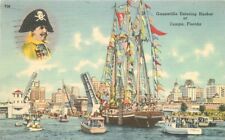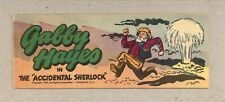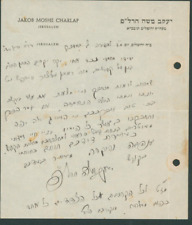1951, LEGENDARY & GEOLOGICAL HISTORY OF LOST DESERT GOLD by RALPH L. CAINE S For Sale

When you click on links to various merchants on this site and make a purchase, this can result in this site earning a commission. Affiliate programs and affiliations include, but are not limited to, the eBay Partner Network.
1951, LEGENDARY & GEOLOGICAL HISTORY OF LOST DESERT GOLD by RALPH L. CAINE S:
$14.00
6 x 8 in booklet is very goodFREE SHIPPING
WIKIPEDIA:
The Lost Dutchman\'s Gold Mine (also known by similar names) is, according to legend, a rich gold mine hidden in the southwestern United States. The location is generally believed to be in the Superstition Mountains, near Apache Junction, east of Phoenix, Arizona. There have been many stories about how to find the mine, and each year people search for the mine. Some have died on the search.
The mine is named after German immigrant Jakob Waltz (c. 1810–1891), who purportedly discovered it in the 19th century and kept its location a secret. \"Dutchman\" was a common American term for a German (\"Dutch\" being the English cognate to the German demonym \"Deutsch\", and not a reference to the Dutch people).[1]
The Lost Dutchman\'s is perhaps the most famous lost mine in American history. Arizona place-name expert Byrd Granger wrote, as
In the 16th century, the Spaniards in New Spain (now Mexico) began to hear rumors of \"Seven Cities of Gold\" called \"Cíbola\" located across the desert, hundreds of miles to the north. The stories may have their root in an earlier Portuguese legend about seven cities founded on the island of Antillia by a Catholic expedition in the 8th century, or one based on the capture of Mérida, Spain by the Moors in 1150.
The later Spanish tales were largely caused by reports given by the four shipwrecked survivors of the failed Narváez expedition, which included explorers Álvar Núñez Cabeza de Vaca and Estevanico. Eventually returning to New Spain, the adventurers said they had heard stories from natives about cities with great and limitless riches. In 1539, Italian Franciscan Marco da Nizza reached Zuni Pueblo and called it Cibola. However, when conquistador Francisco Vázquez de Coronado finally arrived at Cíbola in 1540, he discovered that the stories were unfounded and that there were, in fact, no treasures as the friar had described— only adobe towns.
While among the towns, Coronado heard an additional rumor from a native he called \"the Turk\" that there was a city with plenty of gold called Quivira located on the other side of the great plains. However, when at last he reached this place (variously conjectured to be in modern Kansas, Nebraska or Missouri), he found little more than straw-thatched villages.
The historic Cibola on the other hand is recorded in Spanish sources as another name for the Zuñi pueblo and the surrounding country. The Spanish soon discovered rich copper and turquoise mines in the Pueblo country which made the region famous for its mineral wealth even in recent times. The Pueblo Indians including the Zuñi are still well known for their turquoise and silver work.
In popular cultureLiterature- The novel The King\'s Fifth by Scott O\'Dell tells the story of one such (fictional) expedition through the eyes of a teenage cartographer.
- Texas (1985) by James A. Michener references the site as a background to early Spanish exploration.
- In The Stand by Stephen King, Trashcan Man is instructed by Randall Flagg to meet him in Cibola, which is later revealed to be Las Vegas.
- Edward Abbey\'s autobiographical recount of his summer as a park ranger at Arches National Park, Desert Solitaire, contains a reference to \"seven modern cities of Cibola\" including Phoenix, Tucson, Albuquerque, and Flagstaff.
- Romance author Kristin Hannah\'s The Enchantment (1992) is about a quest for the legendary lost city of Cibola in the late 1800s.
- Cibola Burn is the fourth book in the science fiction novel series The Expanse by James S. A. Corey. The novel describes the flood of humanity out into the galaxy and the race for the newly accessible resources therein.
- The 1955 film Seven Cities of Gold starring Richard Egan, Anthony Quinn, and Michael Rennie tells the story of a 1769 Spanish expedition to California led by Gaspar De Portola to search of gold and to set up Spanish colonies. However, Father Junipero Serra is there to set up a network of Roman Catholic missions.
- The 1958 film The Lone Ranger and the Lost City of Gold, starring Clayton Moore and Jay Silverheels, features three medallions which combine to make a treasure map revealing the location of a hoard of gold.
- The 1992 film ¡O No Coronado! by Craig Baldwin details Coronado\'s ill-fated expedition, in the context of contemporary treatment of indigenous Americans and usage of their traditional lands.
- Cíbola was discovered beneath Mount Rushmore in National Treasure: Book of Secrets, a 2007 film starring Nicolas Cage and Diane Kruger.
- The quest for Cibola was in an episode of the U.S. television series Daniel Boone with Fess Parker.
- The Mysterious Cities of Gold is a 1982 Japanese/French animated children\'s series which spawned a sequel in 2012.
- \"Seven Cities of Gold\" is the seventh track on the Clockwork Angels album by Rush. The lyrics were inspired by lyricist Neil Peart\'s fascination for southwestern US McDuck and his nephews discover the seven cities in the comic \"The Seven Cities of Cibola\" (Uncle Scrooge #7, September 1954), written and drawn by Carl Barks.[3][4]
- The Vertigo/DC comic book series Jack of Fables recently began a storyline called \"Americana\" which relates the efforts of Jack of the Tales in entering Cíbola (issue 17, January 8 cover date).
- There is an arc in the Italian Western/science fiction comic Zagor about seven cities of gold which were abandoned and were remnants of an ancient highly developed civilization (Zagor #355-357, ITA/CRO: \"Le sette città di Cibola\" / \"Sedam gradova Cibole\").
- In the albums Beyond the Windy Isles and Celtic Tales (respectively 1970–1971 and 1971–1972), Hugo Pratt puts Corto Maltese on the track of these cities.
- Electronic Arts published the video game The Seven Cities of Gold in 1984
- The video game Uncharted: Golden Abyss uses Quivira (one of the Seven Cities of Gold) as a final destination for the quest. The game also gives an explanation why Marcos de Niza lied about the location of the cities even though he really did find them.
- The video game Europa Universalis IV has the El Dorado expansion which gives colonizing nations the ability to hunt for the Seven Cities of Gold in the New World.
- In the turn-based strategy game Sid Meier\'s Colonization (1994), scouting lost city ruins (tiles in the map) may result in finding one or more of the Seven Cities of Cibola, granting the player a treasure with a huge amount of gold.
- The Western genre game Gun centers on a land baron\'s search for Quivira in the 1880s.
- In Civilization Revolution for the Xbox 360, PlayStation 3, and the Nintendo DS, players can find the Seven Cities of Gold. The player who finds the Seven Cities of Gold receives 200 to 350 gold pieces, depending on the era, to spend on building cities, military units, settlers (people that found new cities), or roads.
- In the turn-based strategy game Sid Meier\'s Civilization V, the Spanish unique ability is called Seven Cities of Gold, where the player receives bonus Gold resources for discovering natural wonders.
- El de la Plata
- Blum, Geoffrey (1996). Wind from a Dead Galleon. The Adventures of Uncle Scrooge McDuck in Color. Vol.7. Gladstone Publishing. Retrieved 2008-06-29.
- v
- t
- e
- v
- t
- e
- Exploration of North America
- Mythological king
of 1977, the Lost Dutchman\'s story had been printed or cited at least six times more often than two other fairly well-known tales, the story of Captain Kidd\'s lost treasure, and the story of the Lost Pegleg mine in California. People have been seeking the Lost Dutchman\'s mine since at least 1892,[2] while according to one estimate, 9,000 people annually made some effort to locate the Lost Dutchman\'s mine.[3] Former Arizona Attorney General Robert K. Corbin is among those who have looked for the mine.[4]

Related Items:
Carnival 1951 Legendary Pirate Gasparilla Motley Crew Tichnor linen 5670
$9.74
Gabby Hayes Western Giveaway #3 NM- 9.2 1951
$28.00
Letter legendary Rosh Yeshiva in Merkez Harav Rabbi Jacob Moshe Charlap חרל"פ
$289.00



